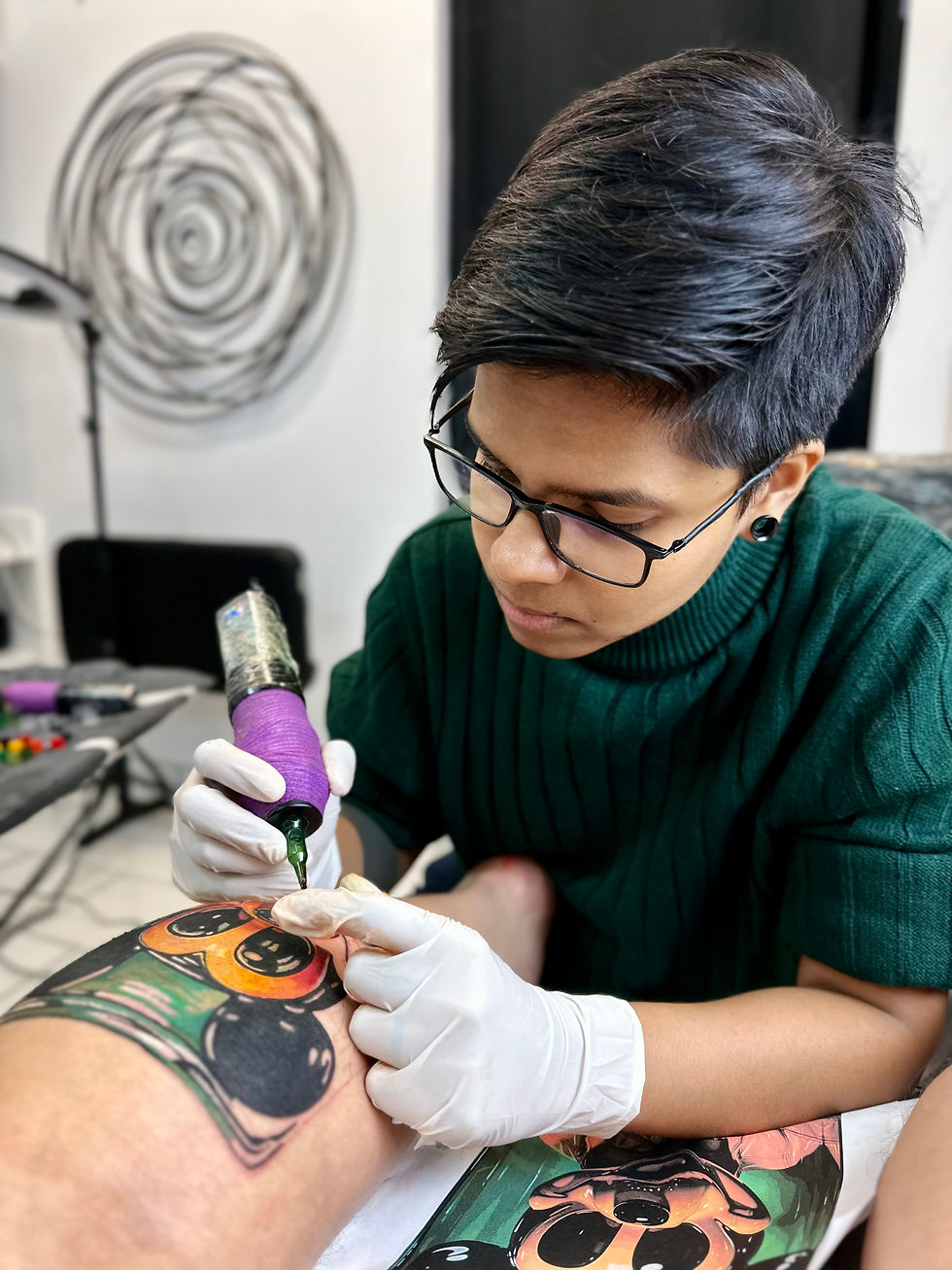Tattoos on Every Skin Tone: How I Design for Rich, Lasting Colour – Nova Scotia, Canada
- Roy Tattoo Art
- Aug 11
- 3 min read

Short version: Every skin tone can wear stunning tattoos. The trick is choosing the right palette, contrast, and composition for your skin so the art reads clearly for years.
Why color looks different on different skin
Tattoo ink sits in the dermis, under your skin’s natural pigment (melanin). That means what we see is an optical blend: ink color + your skin tone.
On lighter skin, more of the ink’s hue and subtle gradients are visible.
On medium/olive tones, colors shift slightly warmer and mid-tones compress, so we lean on saturation and smart contrast.
On deeper tones, very subtle pastels can get lost, so we use opaque, high-saturation pigments and deliberate contrast to make the design pop.
Key idea: it’s not “what colors you can’t have,” it’s “how we make colors read beautifully on your canvas.”
Ink absorption & healing aren’t just about tone
How your skin accepts and heals a tattoo depends on several factors—often more than tone alone:
Geography & climate: Humidity, sun exposure, and season affect healing and long-term vibrancy.
Ethnicity & genetics: influence oiliness, thickness, and sensitivity.
Lifestyle: UV exposure, skincare, workouts/sweat, and aftercare compliance all matter.
Age: collagen and elasticity change line crispness and how smooth blends look.
Medical history & skin events: areas with scars or new skin (after injuries or burns) can sometimes resist ink or heal unevenly.
This is why I always treat every tattoo as a personalized skin project, not a one-size-fits-all print.
My process: how I choose your palette (and why it works)
Consultation & skin read: I look at undertone (warm/cool/neutral) and any textural changes or scars. I’ll ask about age, lifestyle, and meds.
Reference review: We align on the mood and meaning first. Tattoos are fine art with purpose, not just “ink on skin.”
Palette planning:
Lighter skin: full spectrum available; I can include delicate mid-tones and nuanced gradients.
Medium/olive: I bias towards saturated warms and clean cools with enough density and maintain contrast so details don’t look “muddy”.
Deeper tones: I prioritise opaque pigments and strong highlights vs. true shadows and avoid over-reliance on soft mid-tones that won’t read at a distance.
Design for readability:
Higher contrast: bolder light/dark separation so the piece is legible across the room.
Scale & line weight: slightly larger elements and purposeful line weights keep realism crisp over time.
Smart composition: focal points, negative space, and value flow guide the eye and keep the tattoo clear even as it ages.
Swatch tests when needed: For complex colour realism on deeper or scarred areas, I may test tiny colour spots to confirm how they heal on you.
Execution: I build from shadows to lights, reserving the brightest highlights so they actually sparkle against your tone.
Design principles for deeper skin tones (what makes color “pop”)
Use opaque versions of colours (not just translucent) so the hue doesn’t vanish under melanin.
Lean into warm colours (rich reds, oranges, and golden yellows) and dense cools (teals, royal blues, and deep purples) that hold their identity after healing.
Reserve highlights with intention—tiny high-value accents next to deep shadows = instant dimension.
Avoid overstuffed detail in mid-tone zones; cluster detail where contrast supports it.
Think in shapes first, textures second. Big reads first; micro-details after.




Comments